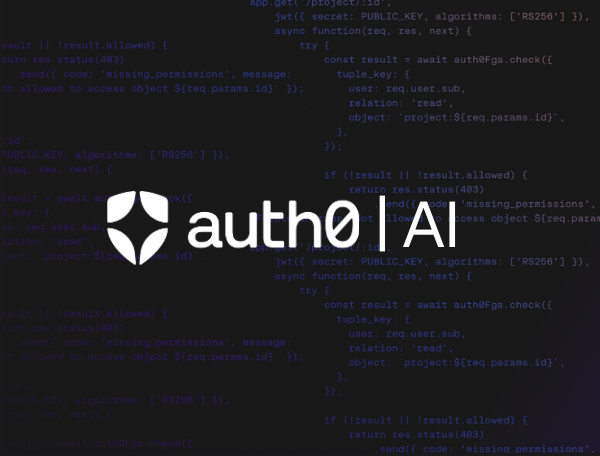Your team is under constant pressure. The list of demands for new features, faster updates, and immediate fixes is never-ending. Now, there’s a new tool that promises to speed everything up: AI that can write code. Developers can type a simple sentence and get working code in seconds. The jump in speed feels almost too good to be true.
This new way of working has a nickname: 'vibe coding.' It's where you just describe what you want — the 'vibe' — and let the AI handle the nitty-gritty of writing the code. And it's not just non-coders doing this. Your new hires are doing it, and even your most experienced engineers are using these tools as a standard part of their toolkit to accelerate delivery.
But there’s a catch. Like any major technological leap, the initial excitement can obscure the need for new processes. When your team embraces 'vibes' without the guardrails to verify the work, you risk piling up a hidden 'debt' of security problems. Every piece of code the AI writes could be hiding a serious flaw, like a password left in plain sight or a door left open for hackers. These are just time bombs waiting to go off.
So the big question for leaders isn't if your team will use AI, but how. How can you use this amazing new tool without creating a mess down the road? This post will explore the challenges that come with this new paradigm. More importantly, it will give you a clear plan to support your team, enabling them to move from simply 'vibe coding' to building with smart, safe speed.
The Anatomy of Risk: Where "Good Vibes" Go Wrong
The appeal of vibe coding is obvious: it's fast. But that speed can be an illusion, and it often creates different problems depending on who’s writing the code. The simple truth is, code written by AI isn't automatically safe. Let’s look at how this goes wrong in the real world.
Persona 1: Jane, the Product Manager, and the Invisible Problems

Jane needs a webpage to collect email sign-ups for a new product. She's not a coder, but with AI, she doesn't have to be. She types in a simple prompt, and like magic, gets working code. The page looks great and the form works. But hidden in that helpful code are problems she would never know to look for:
- Exposed secrets: The AI might have hardcoded the database password right into the code—like leaving your house key under the doormat.
- Wide-open inputs: The form is open to "injection attacks," where a hacker can sneak in malicious commands instead of an email address, potentially damaging her database.
- Leaky error messages: If something breaks, the error messages could reveal secrets about how her company's systems are built, giving attackers a roadmap.
Jane solved her problem for the day, but accidentally created a much bigger, invisible one for the company's security team.
Persona 2: Alex, the Junior Developer, and Blindly Trusting Outside Code

Alex is a new developer, and he’s been asked to add a feature so users can upload a profile picture. To get it done quickly, he asks his AI co-pilot to write the code. The AI suggests using a popular, pre-built tool—an open-source library—to handle the images. Alex trusts it and moves on. The problem?
- Vulnerable tools: The library the AI suggested could be an old version with a known security hole, one that lets hackers run their own code on the company's server. It’s like a chef using a can of ingredients they don't know has been recalled.
- Unchecked files: The code works for pictures, but Alex and the AI didn't add any checks to block other file types. An attacker could upload a harmful script instead of a photo, ready to infect other users.
Alex isn't being lazy; he's just trusting the "magic" of AI. And this isn't a rare problem. Industry research has shown that over a third of AI-generated code has security flaws. His trust in the vibe just brought a dangerous ingredient into the company's software.
Persona 3: David, the Innovator, and the AI Minefield

David is a top engineer, and he’s been tasked with building an exciting new AI agent to help customers with their support questions. This is new territory for everyone, and the pressure is on to be first-to-market. David uses AI to help him build the agent, quickly discovering that this new technology comes with brand-new business risks.
- The insecure API key: To get its job done, the agent needs to connect to other company systems, like the billing platform. To make it easy, the team gives the agent an API key that grants access to sensitive financial data. They don't realize this key has been stored insecurely within the AI's code, essentially left where an intruder could find it and walk right into a critical company system.
- The helpful AI that can't keep a secret: The agent is designed to be helpful by pulling information from internal company documents to answer questions. When a test user asks a simple question about a project, the AI diligently finds all relevant files. The problem? It can't tell the difference between a public memo and a confidential, executive-only strategy document. It happily shares sensitive details from the confidential file because it's programmed to be helpful, not discreet. The AI simply doesn't have the context to know who is cleared to see what.
David, being a good engineer, eventually spots these dangerous gaps. But fixing them makes him realize the problem is much deeper than he imagined. He understood that simply 'vibe coding' his way to a functional agent wasn't enough. The AI could write the code, but it couldn't design the architecture. The real risks weren't just simple bugs; they were complex problems that required deep expertise in security and system design to solve. He learned firsthand that a 'good vibe' can't replace a good blueprint.
The Real Choice: A Cheap Co-Pilot or a Smart One?
So, what's the real problem here? It’s not the individual developers like Jane, Alex, or David. They're just using the tools they've been given. The real problem is the mindset driving the company.
It all comes down to how a company’s leaders see AI. This is where you make the shift from a risky 'Vibe' to a reliable 'Verification' process. You have to choose what kind of co-pilot you want for your team.
The "Replacement" Mindset: The Cheap Co-Pilot
In today's economic climate, where companies are pushed to cut costs and simultaneously increase revenue, the promise of AI as a silver bullet is incredibly tempting. This pressure often gives rise to the dangerous "Replacement" mindset. It's when a company sees AI as a way to replace expensive, experienced developers with something cheaper and faster. In this kind of culture, speed is the only thing that matters. When you think this way:
- Real expertise gets ignored. The careful, slow work of building secure, scalable software is seen as a waste of time.
- Reviews become a rubber stamp. If the AI-generated code seems to work, it gets shipped. No one is paid to be skeptical.
- The company piles up a mountain of debt. This isn't just about security flaws. It’s also about messy, unmaintainable "spaghetti code" that will slow down all future development, kill innovation, and frustrate your best people.
This mindset doesn't just lead to bad code. It creates a fragile team that's constantly putting out fires instead of building value.
The "Augmentation Mindset": The Smart Co-Pilot
This is the path to building things that are both fast and strong. It’s the idea that AI’s job is to make your best people even better, making them faster, more creative, and more effective than ever before. When you lead with this mindset:

- Your experts are freed up. AI becomes a powerful partner that handles repetitive tasks, freeing your senior developers to focus on high-value work: designing secure architecture, solving complex problems, and mentoring the team on how to best leverage these new tools.
- Asking "Are you sure?" is part of the job. Developers are encouraged to be skeptical of AI. They treat its output like a first draft from a new intern—full of potential but in need of a thorough review.
- Safety checks are part of the process. Verifying code isn't an extra step; it's just part of how things get done, supported by the right tools and enough time to do it right.
This is how you get the best of both worlds. You get the speed of AI, but with the safety and quality that only a sharp, human expert can provide. It's how you build great things fast, the right way.
The Blueprint for Verification: A Leader's Action Plan
Choosing the "Augmentation Mindset" is the critical first step. But to turn that mindset into results, it requires a deliberate plan. The goal isn't to slow down 'vibe coding' but to provide the guardrails that make it safe and scalable. This blueprint gives you the philosophy, processes, and tools to do just that.
Here is a practical blueprint for making the shift from a risky 'vibe' to a reliable 'verification' culture.
Start with Culture: Lead with the Right Philosophy
A layered defense begins with people. Your team needs to hear you articulate the "why" behind this shift.
- Publicly champion the "Smart Co-Pilot" model: Make it clear that AI is a tool to make your best people faster and more effective, not a replacement for them. Emphasize that skills like critical thinking, security architecture, and system design are now more valuable than ever.
- Encourage "healthy skepticism": Train your team to treat AI-generated code like a first draft from a brand-new intern. It’s a helpful starting point, not a finished product to be copied and pasted blindly. This mindset alone is one of your most powerful defenses.
Build a Layered Defense
With the right culture in place, you can implement a defense-in-depth strategy that protects your company at every level.
Layer 1: Secure the Foundation (Infrastructure and Policy)
- Centralize API key and secret management: Make it a strict rule: No more static API keys or other secrets stored in code. Enforce the use of a dedicated secrets management tool or vault that allows for short-lived, dynamic tokens. This is the foundational fix for the risk David encountered.
- Establish a secure AI policy: Define which AI tools are approved for use and, crucially, set rules about what data can be shared with them. Your internal source code and customer data should never be pasted into a public AI model.
Layer 2: Secure the Code (Application)
- Mandate human-in-the-loop reviews: Make rigorous code reviews for all AI-generated code non-negotiable. This is your single most effective safety net and would have caught the flaws in the stories of Jane and Alex. A human expert must understand and approve the code before it goes live.
- Teach secure prompting: Train your developers to architect solutions, not just ask for code. A prompt shouldn't be, "Write code that calls the billing API." It should be, "Generate the code to securely call the billing API, first retrieving a temporary access token from our company's secure vault." This builds best practices into the very act of creation.
- Automate code-level defenses: Use automated security scanning tools (SAST, dependency scanners) in your development pipeline to act as a constant, vigilant safety check on any new code, whether it was written by a human or an AI.
Layer 3: Secure the Access (Identity)
- Put identity at the core of every AI interaction: This is the critical top layer, especially for AI agents. An agent must never operate in a vacuum. Every request it handles and every action it takes must be securely tied to a verified user identity and their specific permissions. The agent must be able to answer, "Who is this user, and are they allowed to see this data or do this action right now?" This is the only way to prevent the kind of data leakage and unauthorized actions David's agent was vulnerable to. Solving this core challenge is the principle behind what is now known as Auth for GenAI.
Conclusion: From Vibe to Advantage
‘Vibe coding' is more than a new trend; it’s a new reality for development teams. While it unlocks incredible speed, it also reveals a critical challenge: prioritizing that speed can come at the cost of security and quality. A breach born from a carelessly generated line of code is just as damaging as any other.
The future doesn't require a choice between speed and safety. By consciously choosing to augment your experts instead of trying to replace them, you can have both. The shift from Vibe to Vibe with Verification is not just a security strategy; it's a business strategy. It turns a potential crisis into a sustainable, competitive advantage, allowing you to build the future, fast, and build it right.
Making this strategy a reality requires the right culture, processes, and tools. The blueprint for verification calls for a layered defense, with the top layer being the ability to secure access by putting identity at the core of every AI interaction. This is precisely the problem Auth0 is built to solve with our Auth for GenAI solution.
We provide the identity foundation that ensures your AI agents can confidently answer the question: "Who is this user, and are they allowed to see this data or do this action right now?" By implementing Auth0, you provide the guardrails that transform 'vibe coding' into secure, verified development, turning a potential liability into a true "Smart Co-Pilot."
Discover how Auth0 can help you build a secure and verifiable AI strategy. Learn more about Auth for GenAI.

